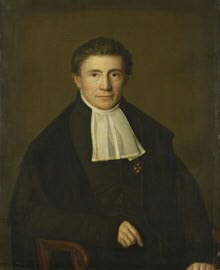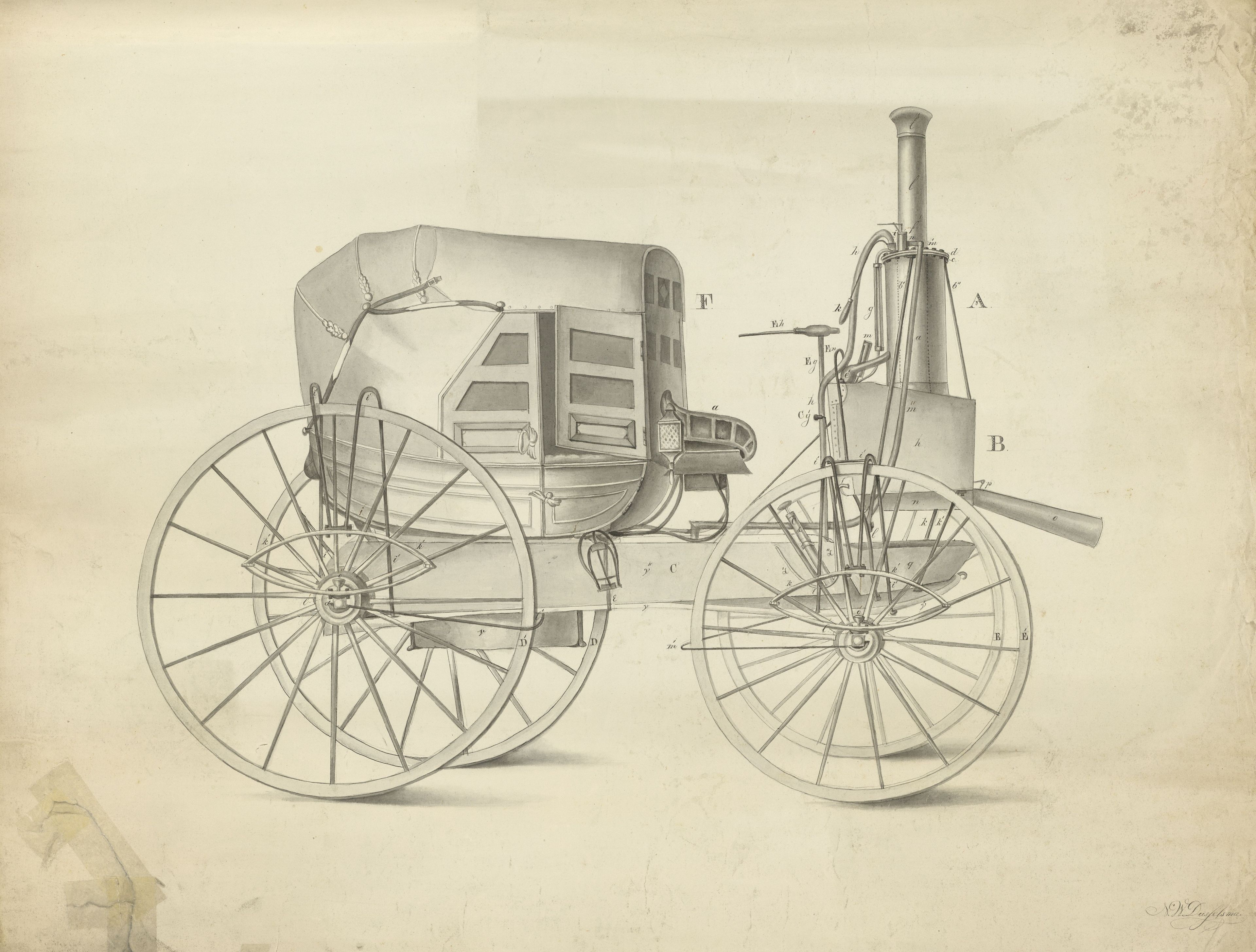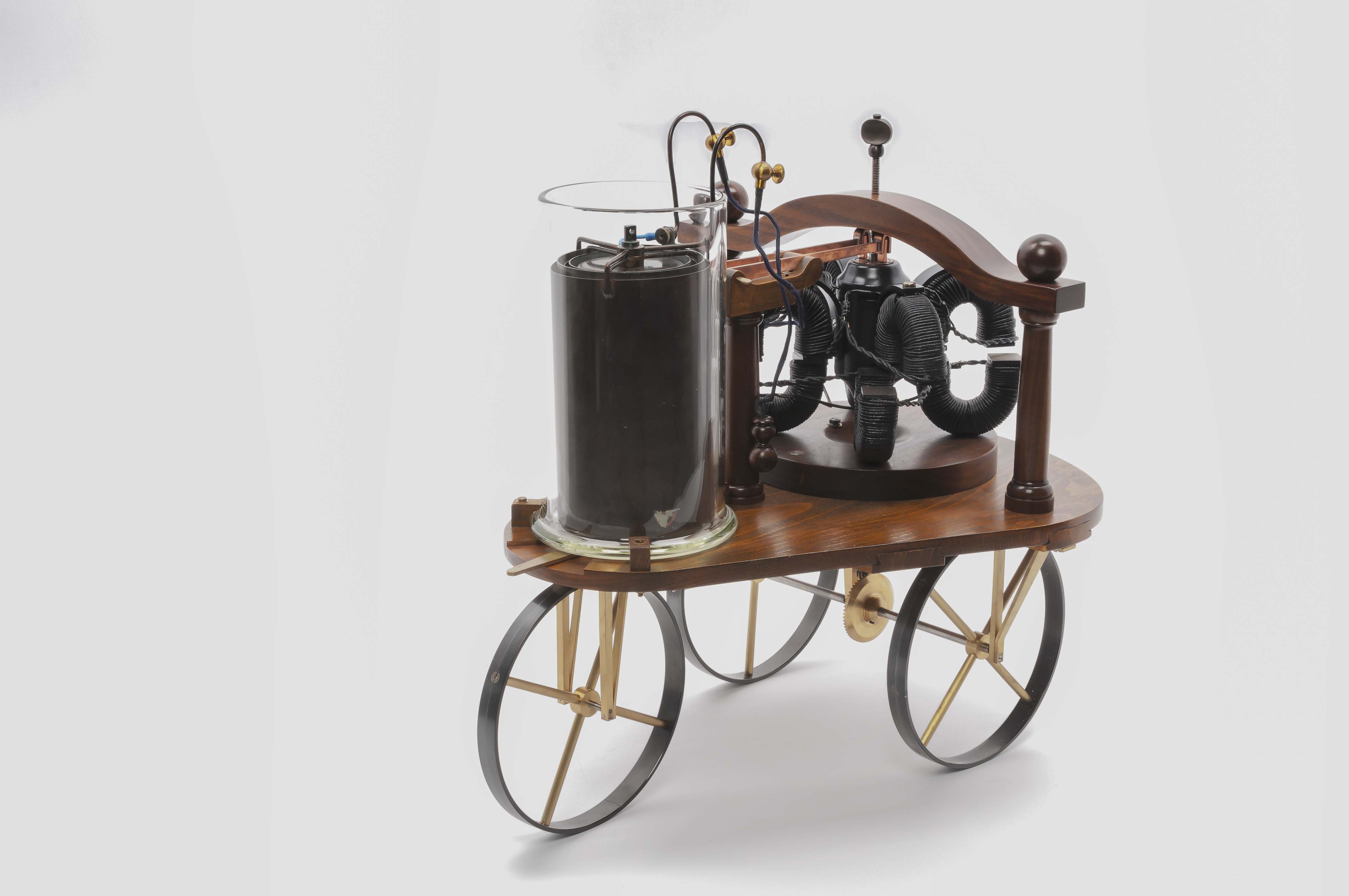Stratingh: A ‘chemistry artist’ ahead of his time

Professor of chemistry Sibrand Stratingh, from Groningen, built the first electric vehicle – the precursor to the electric car – around 1830. He also drove a steam-powered carriage through the streets of Groningen. But his innovative scientific work comprised much more and gained a lot of traction abroad. This has been revealed by research conducted by Ulco Kooystra, who will be awarded a PhD by the University of Groningen on 13 December. Nobel Prize winner Ben Feringa, who is fascinated by Stratingh’s vehicle, will act as an opponent during the doctoral defence.
In his dissertation, Ulco Kooystra paints a lively picture of the life and work of Sibrand Stratingh Ez. (1785-1841), an innovative and experimental scholar. Kooystra: ‘He was constantly busy working on electricity, steam, lighting, oxyhydrogen burners, new medicines, chemical disinfectants, and more. And all this in a time that is often dismissed as an unimportant period in the history of Dutch science.’
Spectacular experiments
Even before he began his studies in medicine, Stratingh founded the Physics and Chemistry Society of Groningen together with other scholars. ‘The period surrounding 1800 was a time of huge scientific change worldwide,’ explains Kooystra. ‘Initially, the members conducted experiments that they had read about, but they gradually began to invent their own experiments. Stratingh soon became the most popular speaker because he spiced up his lectures with spectacular experiments.’
Pharmacy
After gaining his doctorate, Stratingh took over his uncle’s pharmacy and thus gained access to his own laboratory and chemicals. This came in handy for his experiments. He also began to conduct research into quinine and morphine, among other substances, which were medicines that had been isolated shortly beforehand. His books on these substances stood out due to a treasure trove of experimental data and detailed overviews on everything that was known about them. As a result, Stratingh became a well-known scientist in the Netherlands and further afield. In 1823, he was appointed as a professor of chemistry and pharmacy.
Contained epidemic
In 1826, the city of Groningen was hit by a mysterious epidemic (‘the Groningen disease’), which killed over 10% of the population. Under the leadership of Stratingh, a small factory was built to produce chlorine compounds, to disinfect all possible infection sites. It proved to be a great success. The epidemic was contained and, in the decades following, chlorine compounds were applied on a large scale in the fight against cholera epidemics.

New steam-powered vehicle
Around 1830, Stratingh became captivated by steam engine production. Instrument maker Becker built him a steam-powered vehicle, with which the two of them drove through Groningen a few times. ‘Stratingh’s vehicle could be distinguished from, for example, English steam engines, because it could be driven by just one person,’ says Kooystra. ‘It was thus an early version of a car, and so Stratingh was far ahead of his time.’ The government, however, saw no benefit to steam-powered vehicles being used on regular roads, and instead prioritized railways.
‘First electric car’
Hereafter, Stratingh began to experiment with electricity. He made a primitive light bulb decades before Edison and, together with Becker, made an electric motor assembled on a cart. This electric vehicle, a precursor to the electric car, was very possibly the first of its kind in the world. After this, Stratingh continued to work on electrical applications, such as an electric boat, for which he was the first in the Netherlands to use a screw propeller.

A true ‘chemistry artist’
Stratingh published much before his time and his work was accompanied by detailed overviews. In his demonstrations, he presented ever new insights, inspiring others. Kooystra: ‘He did much more than just create the electric and steam-powered vehicles. His pharmaceutical work and disinfectant chlorine compounds were particularly important achievements that also gained much traction abroad. After his death, one of his friends termed him “a true chemistry artist” in a poem – a great and very accurate characterization of this exceptional scientist.’
More information
| Last modified: | 13 December 2021 2.36 p.m. |
More news
-
13 May 2024
‘The colourful cells of petals never get boring!’
Most people will enjoy colours in nature. However, the interest of evolutionary biologist Casper van der Kooi goes much further: he studies how flowers, birds, butterflies, and beetles get their colours. He also studies how these colours are used...
-
13 May 2024
Trapping molecules
In his laboratory, physicist Steven Hoekstra is building an experimental set-up made of two parts: one that produces barium fluoride molecules, and a second part that traps the molecules and brings them to an almost complete standstill so they can...
-
07 May 2024
Lecture with soon to be Honorary Doctor Gerrit Hiemstra on May 24
In celebration of his honorary doctorate, FSE has invited Hiemstra to give a lecture entitled ‘Science, let's talk about it’ on the morning of 24 May
